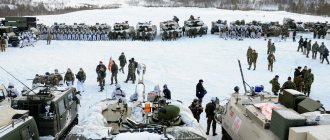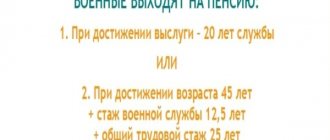Home / Labor Law / Payment and Benefits / Pension
Back
Published: March 27, 2016
Reading time: 11 min
4
16298
A number of regions of Russia are characterized by difficult climatic and other conditions associated with increased health hazards, as well as a high cost of living due to natural reasons. For this reason, various measures to support the population are applied at the local and regional level, aimed at equalizing income and maintaining material equality.
One of these tools is the use of regional coefficients, which are established at the level of the Government of the Russian Federation.
- Concept and determining factors
- What payments are subject to the regional coefficient?
- Regional coefficients in the Russian Federation in 2020
- How is the district coefficient used in calculations?
What is the "regional coefficient"?
The regional coefficient actually means a premium that is applied when calculating salaries, pensions and other benefits. Its value ranges from 1 to 2 depending on the region, and it is established by both federal and local legislative acts.
The coefficient is applied in regions that meet one of the following characteristics:
- Difficult climatic conditions: low temperature, poor climate, which generally negatively affects human health;
- Poor environmental conditions, which also have a detrimental effect on health;
- Low standard of living, determined by natural conditions, remoteness from other, more developed territories of the Russian Federation: for example, in the Far East, where now not only an increasing coefficient is applied, but also a number of programs aimed at developing and populating the region are actively operating.
The size of the coefficient directly depends on the difficulties of living in a particular territory. If the climate or ecology is not too bad, a minimum value is set. The largest allowance is given to those who work in harsh conditions.
Thus, salaries and pensions for residents of different cities may differ. They are calculated taking into account not only the coefficient, but also prices. Two different people who have worked the same number of years in the same positions will receive different salaries: a citizen who worked in the North will receive an increased benefit compared to someone who worked in another region, where lower prices are set and the coefficient is not applied.
Legislation
The specifics of applying the increasing coefficient for salaries and pensions are established by several legislative acts:
| Law | Explanation | Additionally |
| Law of the Russian Federation of February 19, 1993 N 4520-1 | The coefficient is used when calculating salaries and benefits. In addition, pensioners can use compensation for travel to and from their vacation spot once every 2 years by contacting Social Security | |
| Art. 146 Labor Code of the Russian Federation | The labor of citizens working in special climatic conditions is paid at an increased rate. | Interest rates and coefficients apply |
| Art. 148 Labor Code of the Russian Federation | The salary of employees working in special regions cannot be lower than the established amount | Minimum wages are determined by regional legislation |
| Art. 316 Labor Code of the Russian Federation | When calculating salaries, coefficients established by the Government of the Russian Federation are applied. | Local authorities may introduce additional increasing coefficients, but funding will come from regional budgets |
When is the regional coefficient applied?
The use of the coefficient is relevant when calculating the following types of payments:
- Pensions: old age, disability, long service;
- Determination of the minimum wage for a specific region;
- Deduction of insurance contributions to the Pension Fund;
- Supplements for working in harmful or dangerous conditions;
- Bonuses, incentives, compensation;
- Basic salary of employees.
Important! The employer independently calculates remuneration taking into account the coefficient. Employees should not contact them to apply allowances. The same applies to pensions, but here benefits are assigned in the divisions of the Pension Fund.
What does the regional coefficient not apply to?
There are several types of payments for which the use of a multiplying factor is irrelevant:
- Vacation pay. They are calculated from average earnings, where the coefficient is already included, so it is not used when calculating vacation pay;
- Material aid. The employer is not obliged to provide it, but if this is provided for by the local acts of the institution, the coefficient is not applied when calculating such assistance, unless the rules provide otherwise;
- One-time bonuses. They are determined by employers independently and paid solely at their discretion;
- Payment of travel expenses for an employee sent to a region where there is no multiplying factor;
- The accrual of an allowance for work in the North - it already implies monetary compensation for work in special conditions, and cannot be increased by applying a coefficient.
It is worth considering that the coefficient applies to all citizens, regardless of the form of activity of the enterprises in which they work or have worked. For example, individual entrepreneurs must calculate payments according to the same rules as legal entities. As for pensioners, the calculation procedure is the same everywhere for them. The only difference is in the size of the coefficient: in one region it may be higher, in another – lower.
Let's sum it up
The recent pension reform has determined a different procedure for calculating this coefficient
When determining the amount of pension accruals made today, specialists of the Pension Fund of our country use the formulas of several legal acts at once. So, which law is taken into account when will depend on what time frame is taken into account as a period of service .
Regional coefficient by region
Let's look at the coefficient sizes in different regions. For example, in the Altai Territory, a single coefficient applies throughout the entire territory - 1.4. The same applies to the Republic of Bashkortostan, but here it is less – 1.4.
In the Yamal-Nenets Autonomous Okrug, the coefficient is used in Salekhard and adjacent territories - 1.8, and in the Khanty-Mansiysk Autonomous Okrug it is 1.7.
Thus, the value of the coefficient varies in all regions: if in one it can be 2, then in another it can be only 1. This is due to the fact that different climatic conditions operate in different territories.
“We must create optimal living conditions for citizens. Pensions and other social benefits are constantly indexed. In addition, for residents of the North, regional coefficients are used - digital values that allow increasing the amount of payments compared to other citizens who do not have to live and work in difficult weather conditions.”
YES. Medvedev, Chairman of the Government of the Russian Federation.
How is the northern pension formed?
- passport details;
- document confirming work experience;
- paper confirming the presence of northern experience;
- paper confirming the presence of dependents;
- certificate of registration at the place of residence;
- document on change of name;
- certificate of registration with the tax structure (if there is an individual entrepreneurship);
- military ID;
- paper confirming the fact of residence outside the country;
- document establishing a disability group.
When moving from any northern city to warmer climes, there is a change in the calculation of the pension for a former employee of the Far North. The amount of payments will now be related to the new place of residence of the future elderly person. However, the length of service remains unchanged. That is, after moving, only the northern coefficient is not taken into account, but the amount of payments taking into account legal norms in force at the new address is taken into account.
Regional coefficient when assigning a pension
If a citizen is involved in assigning a pension, the calculation of the coefficient is carried out by the employees of the Pension Fund independently.
Example No. 1: pension calculation taking into account the coefficient
The woman worked in Murmansk for 25 years and is entitled to a pension. In total, without taking into account the coefficient, she should receive 20,000 rubles, with it another amount comes out:
20,000 x 1.15 = 23,000 rubles, where 3,000 rubles. is added by applying a coefficient.
Note! If you have worked for at least 1-2 years in the North, but are applying for a pension in a region where the coefficient is not provided, you need to submit documents confirming your work experience in the northern territory. Only after this can you apply for an increased pension taking into account the coefficient.
How to apply for a pension?
To apply for old-age benefits, a few weeks before reaching retirement age you need to start collecting documents. The whole procedure looks like this step by step:
- Collect documents and submit along with your application. It is filled in on the spot. You should contact the territorial office of the Pension Fund at the place of registration.
- Wait for the results of document verification. Usually they are checked no more than 10 days. If there are no problems, a decision on granting benefits will be made. The money will start flowing into your bank account.
There are areas in the North where there are no bank branches. In this case, the money will arrive at the Post Office, as it was before. If necessary, you can have your pension delivered by postman or apply for it yourself.
Example No. 1: registration of a pension by a resident of the North
The man has worked in the North for more than 25 years, therefore, he has the right to receive early old-age benefits. He still has 5 years left before he reaches the standard old-age pension. To process payments and stop working, the citizen prepared documents and submitted them to the Pension Fund at his place of residence.
Based on the results of consideration of the application, the pension was assigned with all allowances and increasing coefficients in accordance with the region of work and residence.
Note! All payments are calculated by Pension Fund employees themselves. If you have comments on the calculation - you did not take into account the length of service, or incorrectly calculated the amount taking into account the IPC - you can express them orally or send a written complaint to the head of the Pension Fund. The period for consideration of requests is 30 calendar days; based on the results, you should be sent a written response.
Documents for assigning a pension
To apply for a pension you must provide the following:
- Statement;
- SNILS;
- Work book.
You will also need a passport. Copies are made of all documents, and the originals are returned to the applicant.
Grounds for refusal
They may refuse to grant old-age benefits if the citizen does not have sufficient grounds for registration: he has not reached retirement age, does not have enough experience for early registration, etc. Also, the basis may be the provision of an incomplete set of documents. In this case, you need to correct the problem and contact the Pension Fund again.
If you believe that your application for benefits was denied unreasonably, request a reasoned refusal in writing. In the future, you can use it to draw up a complaint to the head of the Pension Fund or submit documents for appeal to the court. The case will be considered through administrative proceedings.
Based on the results of the proceedings, the court will independently send a copy of the court decision to the Pension Fund of the Russian Federation. If it is ruled in your favor, Pension Fund employees will assign and recalculate your pension without unnecessary reminders. If you are not satisfied with the decision, you can appeal it through the appellate authority only before it comes into force.
Pension provision for Northerners
Citizens living in the regions of the Far North and equivalent areas, as well as citizens who previously worked in such areas, regardless of their current place of residence, are granted the right:
- for early assignment of old-age labor pension;
- to increase the fixed basic amount of the insurance portion (hereinafter referred to as the FBI) of the old-age labor pension, or to increase the FBI labor disability pension, or to increase the FBI labor pension in the event of the loss of a breadwinner.
Who has the right to receive an early retirement pension for work in the Far North?
This right is granted:
- men upon reaching the age of 55 years and women upon reaching the age of 50 years, if they have worked for at least 15 calendar years in the Far North or at least 20 calendar years in equivalent areas and have an insurance record of at least 25 and 20 years, respectively. For citizens who worked in the Far North and equivalent areas, a labor pension is established for 15 calendar years of work in the Far North. Moreover, each calendar year of work in areas equated to the regions of the Far North is counted as nine months of work in the regions of the Far North. Citizens who have worked in the Far North for at least 7 years and 6 months are granted a labor pension with a reduction in the generally established retirement age (60 years for men and 55 years for women) by four months for each full calendar year of work in these areas; Citizens who have worked for at least 15 calendar years in the regions of the Far North or less than 20 calendar years in equivalent areas and who have the insurance length and length of service required for the early assignment of an old-age labor pension and the length of service in the relevant types of work, the age established for the early assignment of the said pension, is reduced by five years.
- women who have given birth to two or more children, upon reaching the age of 50, if they have an insurance record of at least 20 years and have worked for at least 12 calendar years in the Far North or at least 17 calendar years in equivalent areas;
- men upon reaching the age of 50 years, women upon reaching the age of 45 years, permanently residing in the regions of the Far North and equivalent areas, who have worked for at least 25 and 20 years, respectively, as reindeer herders, fishermen, and commercial hunters.
How does the fixed basic size of the labor pension of “northerners” increase?
The FBI old-age labor pension, the FBI disability labor pension and the FBI labor pension for the loss of a breadwinner of “northerners” are increased by the corresponding regional coefficient, which is established by the Government of the Russian Federation depending on the region (locality) of residence, for the entire period of residence in these areas ( localities) of residence. If a pensioner moves from the Far North region to an area with normal climatic conditions, the FBI old-age labor pension, the FBI labor disability pension and the FBI labor survivor's pension are subject to revision and are determined without applying the regional coefficient.
If a pensioner comes from the Far North region to another northern region, where a larger or smaller regional coefficient is established for wages, the FBI of the old-age labor pension, disability labor pension and in the event of the loss of a breadwinner is subject to change either upward or downward according to depending on the area of your new place of residence. Citizens who have worked for at least 15 calendar years in the regions of the Far North or at least 20 calendar years in areas equivalent to them, and have an insurance record of at least 25 years for men and at least 20 years for women, the FBI insurance portion of the old-age labor pension and the labor disability pension is set at an increased rate regardless of place of residence. At the same time, they are given the right to choose: an increase in the FBI insurance part of the old-age labor pension and the FBI disability labor pension using the corresponding regional coefficient, or the establishment of an increased fixed basic amount of the labor pension. How is “northern” experience taken into account when assigning a pension? When determining the right to an early retirement pension in old age, the “northern” length of service is calculated on a calendar basis, that is, without using preferential calculation. The same procedure for calculating the “northern” length of service was applied in accordance with previous legislation, including the pension legislation of the USSR. In the case of an assessment of pension rights as of 01/01/2002 using paragraph 3 of Article 30 of the Federal Law of December 17, 2001 No. 173-FZ, periods of work in the Far North are included in the total length of service in calendar order.
If the assessment of pension rights as of 01/01/2002 at the choice of the insured person is carried out using paragraph 4 of Article 30 of the Federal Law of December 17, 2001 No. 173-FZ, then periods of work in the regions of the Far North and areas equated to regions of the Far North are included in the total length of service equal to one and a half times. In this case, the restrictions provided for in this paragraph are applied to the calculated amount of the labor pension. In all cases, the assessment of pension rights is carried out taking into account the provisions of the citizen according to the most beneficial option for him. Regional coefficients for wages of workers in non-production industries in the regions of the Far North and equivalent areas, used in assessing pension rights
| Regions of the Far North and equivalent areas | Regional coefficient | |
| 1 | Islands of the Arctic Ocean and its seas (except for the White Sea islands and Dikson island) The Republic of Sakha (Yakutia):
Sakhalin region:
Kamchatka Krai:
Chukotka Autonomous Okrug (entire territory of the Autonomous Okrug) | 2,0 |
| 2 | Krasnoyarsk region:
Murmansk region:
| 1,8 |
| 3 | The Republic of Sakha (Yakutia):
Magadan region (entire territory of the region) Murmansk region:
| 1,7 |
| 4 | Komi Republic:
The Republic of Sakha (Yakutia):
Krasnoyarsk region:
Khabarovsk region:
Kamchatka Territory (the entire territory of the region with the exception of the Aleutian region (Commander Islands) Sakhalin region:
| 1,6 |
| 5 | Komi Republic:
The Republic of Sakha (Yakutia):
Tyva Republic:
Nenets Autonomous Okrug (entire territory of the Autonomous Okrug) Tyumen region:
Khanty-Mansiysk Autonomous Okrug (north of 60° north latitude) Yamalo-Nenets Autonomous Okrug (entire territory of the Autonomous Okrug) Tomsk region:
| 1,5 |
| 6 | Altai Republic:
Republic of Karelia:
Republic of Sakha (Yakutia) (the entire territory of the Republic with the exception of cities and areas specified in paragraphs 1, 3, 4, 5) Republic of Tyva (the entire territory of the Republic with the exception of the areas specified in paragraph 5) Primorsky Krai:
Khabarovsk region:
Arhangelsk region:
Murmansk region (the entire territory of the region with the exception of cities and districts specified in paragraphs 1, 2, 3) Sakhalin region (the entire territory of the region with the exception of cities and districts specified in paragraphs 1, 4) | 1,4 |
| 7 | The Republic of Buryatia:
Republic of Karelia:
Komi Republic:
Krasnoyarsk region:
Amur region:
Irkutsk region:
Transbaikal region:
Khanty-Mansiysk Autonomous Okrug: (south of 60° north latitude) Tomsk region:
| 1,3 |
| 8 | The Republic of Buryatia:
Komi Republic (the entire territory of the Republic with the exception of cities and districts specified in paragraphs 4, 5, 7) Primorsky Krai:
Khabarovsk region:
Arkhangelsk region (the entire territory of the region with the exception of the area specified in paragraph 6) Perm region:
| 1,2 |
| 9 | Republic of Karelia (the entire territory of the Republic with the exception of cities and regions specified in paragraphs 6, 7) | 1,15 |
Compensation for travel to and from a vacation destination Pensioners who are recipients of old-age and disability pensions and who live in the Far North and equivalent areas have the right to compensation for the cost of travel to a vacation destination on the territory of the Russian Federation and back. Payment of the cost of travel to a holiday destination outside the Russian Federation, including to the border of the Russian Federation, is not made. For compensation, a pensioner can apply to the Pension Fund of the Russian Federation at his place of residence once every two years. Compensation can be made in the form of:
- provision of travel documents ensuring the passage of pensioners to their vacation destination and back;
- reimbursement of expenses actually incurred by the pensioner to pay the cost of travel to the place of rest and back.
Reimbursement of expenses actually incurred by the pensioner to pay for the cost of the train to the vacation spot and back is made within the limits of the fare:
- by rail - in a reserved seat carriage of a passenger train;
- by air – in the economy class cabin;
- by inland water transport - in the cabin of the third category of a river vessel of all lines of communication;
- by sea transport - in the cabin of 4-5 groups of sea vessels of regular transport lines;
- by road - in a general bus, and if not available - in buses with soft folding seats.
FAQ
Question No. 1. Is the fixed part of the disability pension increased by the coefficient?
Yes, it is increasing. The same applies to the old age insurance pension.
Question No. 2. What length of service is required to receive an early northern pension?
Upon reaching retirement age, men and women must work for 15 years. If a woman has two or more children, the minimum length of service is reduced to 12 years. This applies to those who worked in the Far North. For equivalent areas, the minimum experience is 20 and 17 years, respectively.
Common errors
Mistake #1. If a person has worked in the north, but applies for a pension in a regular region, the coefficient will not be applied.
No, when calculating a pension, the coefficient will be used for the entire period of work in a special region.
Mistake #2. If a citizen has not worked in the north for a certain number of years, the pension coefficient will not be applied.
No, the minimum length of service is established only for early retirement. In other cases, all periods of work in the north are included in the calculation.
Impact on the amount of payment

Know! Pension payments can be calculated in two ways:
- use of old rules where the converted experience coefficient is applied;
- application of the updated formula, the operation of which is reflected in the Law “On Labor Pensions in the Russian Federation” and the Federal Law “On Insurance Pensions”.
The choice of calculation method, if both can be applied to a person's pension, is made in favor of the method that establishes a larger payment rate.
The coefficient directly affects the final amount of payments after a person retires. Accordingly, the higher this coefficient, the larger the pension amount.
The calculation principle involves multiplying the indicator under consideration by the average earnings established for the country for the third quarter of 2001, establishing the ratio of a person’s salary to the average monthly income in the Russian Federation for any five years before the year indicated above.










